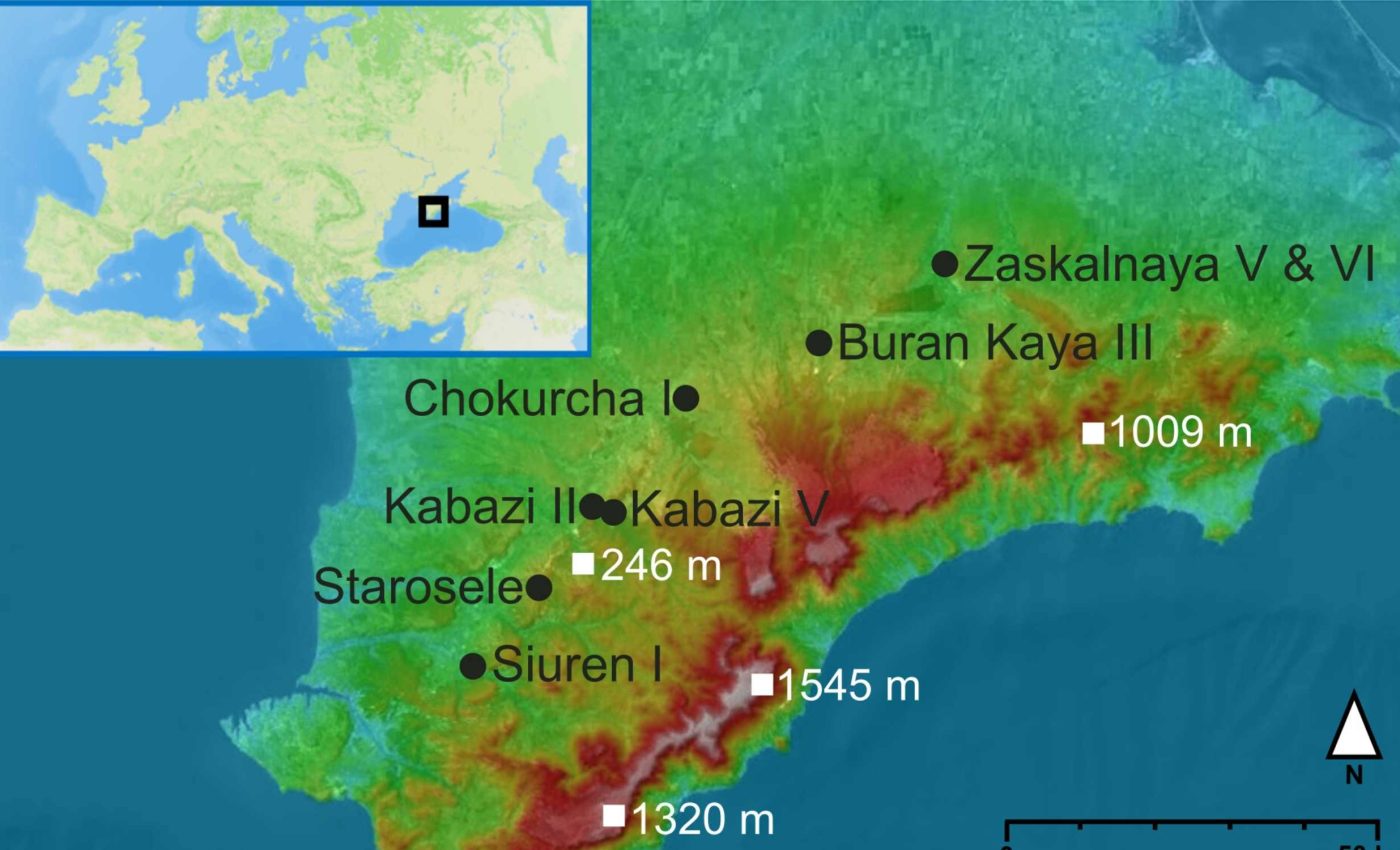
DNA dating back 45,000 years proves Neanderthals crossed Eurasia from one end to the other
Archaeologists working in Crimea have recovered ancient DNA from a tiny bone and matched it to Neanderthals from Siberia. The genetic link spans about 1,900 miles across Eurasia and dates to roughly 45,000 years ago.
The result shows that Neanderthals were not isolated by geography. They traveled, met distant groups, and stayed connected across open country.
Tiny bone reveals ancient identity
The work was led by Emily M. Pigott, an archaeologist, at the University of Vienna (UV). Her research focuses on ancient biomolecules and late human prehistory.
The bone came from the Starosele rock shelter in Crimea and measured about two inches. Using Zooarchaeology by Mass Spectrometry (ZooMS), a protein-based method that identifies species from bone collagen, the team could screen fragments too small to judge by eye.
That approach is standard in a recent primer explaining how collagen fingerprints reveal animal identity from tiny pieces. It lets researchers find rare human remains in bags full of butchered fauna.
Of 150 fragments, only one carried Neanderthal DNA, and about 93 percent were horse bones, according to the study. The dates place this individual near the time modern humans were expanding in Europe.
Neanderthal DNA ties continents together
The team sequenced mitochondrial DNA, the maternal genetic material passed from mothers to offspring. That signal confirmed a Neanderthal and revealed close ties to individuals in the Altai region of Siberia.
“Genetically, Star 1 is closely related to Neanderthals from the Altai via its mitochondrial DNA,” said Pigott. The connection points to movement across the heart of Eurasia rather than isolated valleys.
Stone tools at Starosele match the Micoquian, a late Neanderthal stone tool tradition with thin bifacial points. Matching toolkits also appear in the Altai, as shown by evidence from Chagyrskaya Cave.
The genetic and cultural signals line up with the distance. A link across 1,900 miles is more than an occasional wander; it suggests repeated contacts or migration routes used by several groups.
Corridors shaped by shifting climates
To test how people could cross such space, the team modeled paleoclimate, the past climate reconstructed from geological and biological records. They found windows when warmer, wetter conditions opened grassland corridors between eastern Europe and central Asia.
One corridor tracked close to 55 degrees north, a band that would have carried herds of horses and bison. Hunters following those herds could spread slowly while keeping skills and families intact.
This picture fits the Altai record at Chagyrskaya, where deposits between about 59,000 and 49,000 years ago contain thousands of Micoquian tools and steppe fauna. Mobile Neanderthals were taking advantage of a productive open-country rather than sitting still.
Neanderthals adjust to change
Neanderthals did not simply follow herds; they adjusted their habits to match shifting ecosystems. Their tools, shelter patterns, and hunting strategies reveal a capacity to handle both harsh winters and warmer interglacial periods.
As climates cooled, they expanded into open steppe environments rich with large herbivores. When temperatures rose, they shifted toward forested zones, tracking new sources of food and raw materials.
These adjustments required flexible thinking and shared knowledge. The spread of the Micoquian tool tradition across thousands of miles suggests that ideas traveled as quickly as the people carrying them.
It points to a social network capable of transmitting methods, maintaining cooperation, and surviving abrupt environmental swings.
Evidence from a crucial moment
The Crimean date falls near the period when modern humans were spreading across Europe and Neanderthals were declining. A 2014 analysis showed that the decline unfolded at different times in different regions.
Starosele helps fill a geographic gap. It hints that some Neanderthals stayed connected across wide spaces even as their overall numbers shrank and new populations arrived.
The result also adds context to the genetic traces in living people. Small amounts of Neanderthal DNA in most humans today point to contact zones that likely shifted with climate and terrain.
Finding humans in tiny pieces
The search began with ZooMS, a fast screening pipeline that reads short protein fragments called collagen peptides to tag species. By scanning many fragments, researchers can pick out the rare hominin pieces that deserve deeper study without grinding away whole collections.
Once a human bone is found, the clock matters. Single amino acid radiocarbon dating of hydroxyproline helps remove contamination and improves accuracy for old bones.
“This study highlights the integration of Zooarchaeology by Mass Spectrometry, radiocarbon dating, and ancient DNA analysis to uncover rare hominin remains,” said Pigott. The same toolkit can be applied to other sites where bones are tiny, mixed, and fragile.
The Starosele case shows how a sliver of bone can redraw a map. Careful chemistry and genetics can turn a single fragment into a story about movement, connection, and survival.
The study is published in Proceedings of the National Academy of Sciences.
—–
Like what you read? Subscribe to our newsletter for engaging articles, exclusive content, and the latest updates.
Check us out on EarthSnap, a free app brought to you by Eric Ralls and Earth.com.
—–













